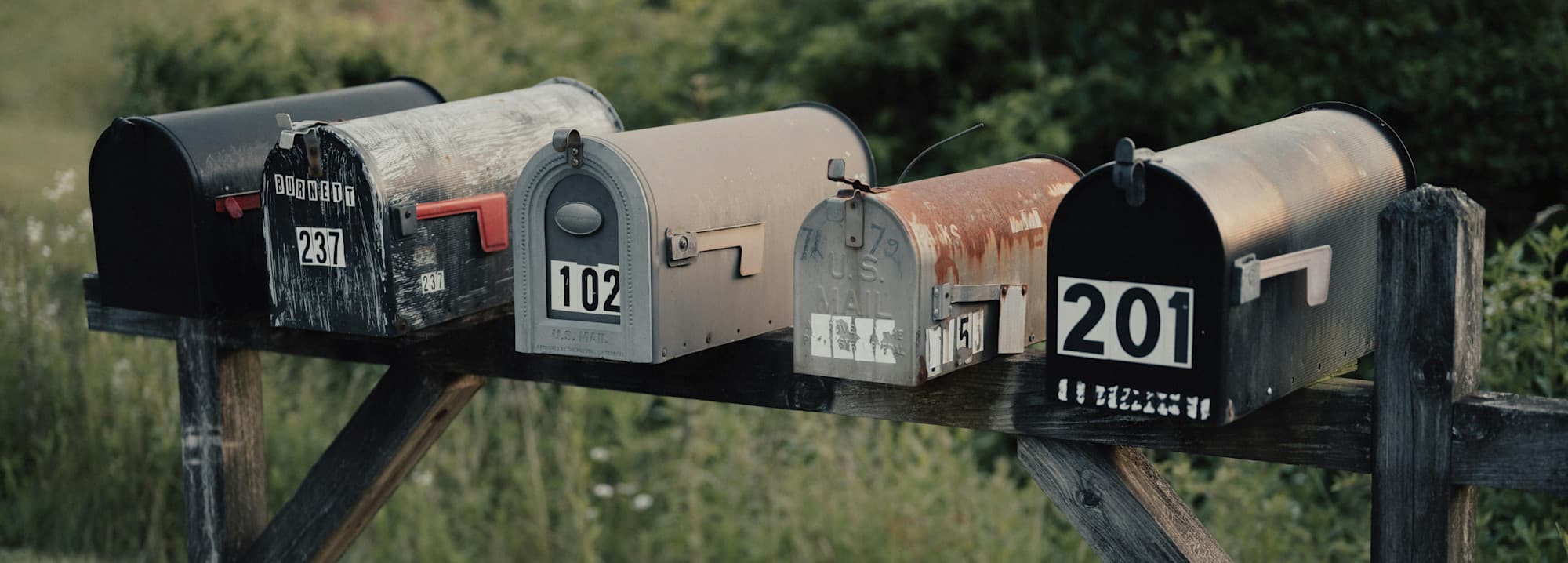
Political Direct Mail: How to Win Votes With Mailers
Political direct mail may sound old-school in the age of social media ads and viral videos. But for grassroots and Independent candidates, it’s still an effective way to connect with voters, especially those who aren’t online much. Done right, a mailer can spark household conversations, build name recognition, and drive real action before election day.
This guide walks you through what political direct mail is, why it works, and how to create mailers that make an impact without draining your budget.
What Is Political Direct Mail?
Political direct mail is campaign literature, like postcards, letters, or flyers, sent through the postal service directly to voters’ homes. Unlike a Facebook ad or text message, a mailer is tangible. Voters can hold it, put it on the fridge, hand it to a family member, and keep it until they’re ready to vote.
Although a text or email may seem more convenient for voters, physical campaign materials may be more engaging and carry more credibility than ads or digital outreach. According to the 2024 USPS Political Mail Report:
76% say they check their mailbox at least four times per week
58% felt less overwhelmed by direct mail than other channels
52% said they feel direct mail is more factual and reliable than other political advertisements
For local elections where every vote matters, those numbers are hard to ignore.
Why Political Direct Mail Works
Direct mail combines targeted precision with personal connection. Here’s why it’s still relevant for campaigns of all sizes:
Broader Reach: Direct mail reaches voters digital ads may miss. Not everyone spends hours scrolling on their phone. Older voters who tend to turn out at higher rates still check the mailbox daily.
Encourages Conversation: Direct mail can spark conversations at home. You can address a mailer to a household, not just an individual, so one piece might influence multiple voters in the same family.
Easier to Digest: Direct mail materials feel less intrusive. A postcard delivered by a postal worker is easier to read, investigate, and understand than a surprise text message.
Highly Targeted: With voter file data, you can tailor your direct mail messages to specific neighborhoods, demographics, or voting histories.
Pairs Well With Other Outreach: Direct mail works best when integrated. The most effective campaigns use mail alongside texts, calls, canvassing, and social media for multiple “touches” before election day.
In short, direct mail outreach blends the reach of traditional campaigning with the precision of modern voter data. It gives you a trusted, tangible way to put your message in voters’ hands. When combined with other outreach, political direct mail can be the difference between being remembered and being overlooked on election day.
LEARN MORE: Maximize your impact with our guide to political campaign outreach.
How to Run a Successful Political Direct Mail Campaign
Direct mail works best when it’s part of a clear, intentional plan. From defining your goal to tracking results, each step builds on the last to make sure your mailers land in the right hands at the right time.
Step #1: Set a Clear Goal
Before you pick a postcard design, decide what you want your mailer to accomplish, such as:
Introduce yourself to voters
Promote an event, like a rally, virtual meet-and-greet, or town hall meeting
Share your stance on key issues
Get out the vote (GOTV) before early voting or election day
Based on USPS research, 73% of voters felt direct mail was an important way to learn about candidates in time for early voting, and 38% reported learning about upcoming events or campaign rallies from direct mail materials. To ensure your outreach resonates, you need a clear plan, because your direct mail goals will shape the content, message, timing, and targeting.
Step #2: Nail Your Message and Design
Your mailer should be visually striking, easy to read, and action-focused. Follow these best practices:
Use a bold, memorable headline. Make sure your name and the office you’re running for are impossible to miss.
Include authentic, high-quality photos. Use real images of yourself with supporters or in the community, not generic stock photos.
Keep text short and scannable. Use bullet points instead of long paragraphs.
Stay consistent. Stick to your campaign’s established logo, colors, and fonts.
Add a clear call-to-action (CTA). Whether it’s a reminder of the voting deadline, a request to join a campaign event on a specific day, or a call to donate at a provided link or QR code, make it obvious what you want voters to do next.
Remember to test your links before sending anything out. If you use a QR code, scan it yourself before printing to make sure it works.
Your design and layout are important: 72% of voters said they’re more likely to read a piece of mail if it’s visually appealing, and 67% of voters feel that eye-catching visuals and clear layouts make a mailer more memorable. That memorability can lead to more votes.
Voters reported preferring postcard and comparison chart layouts over newsletter or traditional letter formats. Consider testing different designs and getting multiple opinions before heading to the post office.
LEARN MORE: Create a cohesive narrative in your campaign messaging with these quick steps.
Step #3: Target the Right Voters
Mail is more expensive than most digital outreach channels, so make every piece count.
Review and understand your voter file early, at least 2 to 3 months before you plan to send direct mail.
Break up your list by household to save money on postage.
Prioritize strategically. You can target strong supporters who are already likely to vote for you when sending mailers about events and donations, and focus on low-propensity voters who share your values but may need a reminder to cast a ballot when nearing election day.
To keep costs down, remove unlikely voters from your list. If someone hasn’t voted in a decade, your dollars are probably better spent elsewhere.
Step #4: Time It for Maximum Impact
Timing is everything. Mail too early, and voters might forget you. Mail too late, and pieces could arrive after election day.
To build a timeline of when to send direct mail materials:
Map out key dates like ballot drop, early voting start, and election day.
Work backward at least 2 to 3 weeks from your in-home target date to finalize designs.
Send mailers to your direct mail vendor at least 10 to 14 days before you want them in mailboxes.
If your budget allows for multiple drops, plan one early for awareness and one closer to voting to increase turnout.
LEARN MORE: Explore more ways to boost turnout.
Step #5: Choose and Work With a Vendor
If you’re not printing and mailing yourself, research mail houses with political experience.
To find the right one for your campaign, ask vendors:
Do you handle design, printing, and list prep?
What’s the cost per piece, including design, printing, and postage?
How long is the timeline from proof approval to mail drop?
Can I see samples of past work?
Local vendors can sometimes deliver faster and help you avoid cross-country shipping delays. As an added bonus, they may become supporters of you themselves.
Step #6: Budget Wisely
Political direct mail typically costs $0.50 to $0.70 per piece depending on format and volume.
To control costs:
Compare cost-per-contact with other outreach like texts or calls.
If you can only afford one mail drop, send it during GOTV, just before voters cast their ballots.
Pair one mailer with lower-cost follow-ups like texts, robocalls, or door-knocking.
A smart budget keeps your mail plan realistic and sustainable. By knowing your limits, timing your drops strategically, and pairing mail with lower-cost outreach, you’ll get the most impact from every dollar you spend without sacrificing reach or quality.
Step #7: Track and Follow Up
You can measure mailer effectiveness by:
Tracking website visits during the drop window
Monitoring QR code scans
Watching for spikes in donations or volunteer signups after mail lands
Plan strategic follow-ups for after a mailer drop. Texts, calls, and in-person canvassing can help reinforce your message.
LEARN MORE: See more tips and get expert advice in our on-demand mail and media basics webinar.
Real-World Wins With Political Direct Mail
Direct mail is a decisive factor in races across the country, from small-town council seats to competitive county offices. These campaigns show how targeted, well-executed mailers can help candidates stand out and win over voters:
City Council Race in Ohio: Hudson City Councilor Casey Weinstein sent 1,092 personalized postcards during his campaign, and he attributes direct mail as a key aspect of his success.
Board of Election Race in California: Amber Childress, during her run for Alameda County Board of Education in Oakland, sent 12,500 mailers and won her election by 1,600 votes against a two-term incumbent.
City Council Race in New York: Richard Thomas saturated his key voting districts with direct mail during his run for Mount Vernon City Council. In addition to spending less per voter than his opponent, Thomas won 79% of the targeted election districts and 72% of the popular vote — the largest win margin seen in that city.
These examples prove that with smart targeting, compelling design, and strategic timing, political direct mail can move the needle, sometimes enough to change the outcome of an election.
Avoid Common Mistakes That Sink Direct Mail Campaigns
Even a well-funded mail plan can fall flat if you miss the basics. Here are some pitfalls to steer clear of:
Skipping legal delivery rules. Only USPS employees can place mail in mailboxes. Hand-delivering campaign literature? Use door hangers or leave-behind cards instead.
Overloading your design. Cramming too much text or imagery into a small space makes your message hard to digest. Aim for clean layouts, strong headlines, and short bullet points so voters can absorb your key points at a glance.
Waiting until the last minute. Printing, addressing, and mailing take time, often more than you think. Late mailers risk arriving after voters have already cast their ballots. Build in at least 10 to 14 days of lead time before your target in-home date.
Forgetting the proofing step. A single typo, broken QR code, or missing disclaimer can cost you credibility. Always check your design, links, and addresses before sending to print.
By avoiding these mistakes, you’ll protect your budget, maintain professionalism, and give your mailers the best chance of actually influencing voters.
LEARN MORE: Use our direct mail checklist to keep your plan on track.
Make Political Direct Mail a Winning Part of Your Strategy
Political direct mail isn’t a magic bullet, but when planned, timed, and targeted well, it’s a powerful tool in your campaign outreach arsenal. Use it alongside your canvassing, texting, and community events to create multiple, memorable touches that build trust and turnout.
In close races, those extra conversations and reminders can be the difference between almost winning and winning outright. Whether you’re running for school board or city council, the right mailer, sent to the right voters at the right time, can move votes in your favor.
GoodParty.org empowers your Independent, nonpartisan, or third-party campaign with the voter data, strategy support, and campaign tools you need to run smarter. From custom mailing lists to GOTV planning, we help you reach the right voters at the right time.
Photo by Tolga Ahmetler
Sign up for free at GoodParty.org and put political direct mail to work for your campaign.

